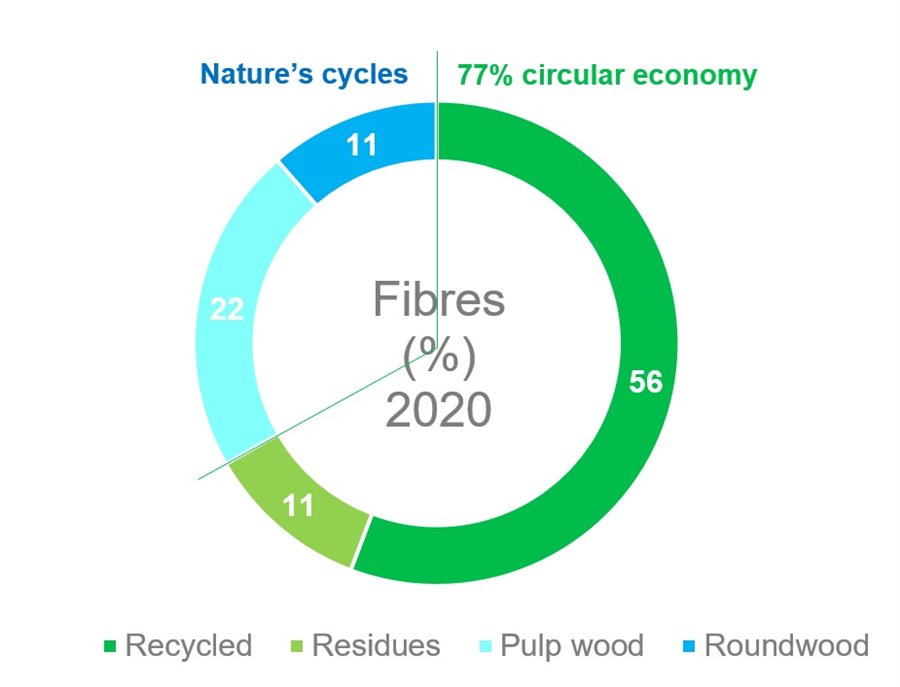NEWS
New forest strategy misses the opportunity to maximise climate mitigation effect of the forest-based sector
The new Forest Strategy is an important piece of the European Commission architecture to deliver on the European Green Deal. There is a consensus on the need for the new forest strategy to foster a European circular bioeconomy and the sustainability of Europe’s forests to achieve the 2050 climate neutrality target. However, Cepi does not see the coherence between different policies addressing and impacting forests in the proposed strategy.
“The strategy focuses much on the sink function of forests and simply misses the holistic contribution that wood-based products can bring to a greener and more circular economy: to keep fossils in the ground! The European forests and the forest-based sector provide integrated solutions to the global climate challenge on a very large scale. Together with the product substitution effect, the overall positive climate effect is estimated at 20% of all fossil emissions in the European Union”, commented Jori Ringman, Cepi Director General. “And there is a plenty of potential that remains untapped with the proposed Forest Strategy.”
In addition, some sectors depending on fossils will now have free allocation, a carbon border measure and an earmarked sink in the forests that these sectors have nothing to do with. “Bioeconomy will not have a level playing field competing with such fossil sectors”, concludes Ringman.
Cepi supports the initiative to plant three billion additional trees, we need more forests in Europe but protecting our forests with a short-term tree-planting exercise or converting them into nature restoration areas will not be sufficient to reach our climate objectives.
“The European Paper industry is ready to help make the three billion trees initiative a success for the long-term sustainable growth of forests. We believe this is the right policy, forests need to be grown more, rather than their use limited”, says Ringman.
Instead, the proposed strategy sets the focus on addressing developments that are caused by external factors, and risks undermining the contribution of the forest and forest-based sector as a whole:
- By reserving trees as sinks only, the full benefits of the bioeconomy substituting fossil materials and fuels is lost.
- Setting aside forests for conservation purposes and prescribing forest owners particular management practices is underestimating the diversity of practices already existing and needed within sustainable forest management across the continent.
Both the European Parliament and EU Member States have positions where the balance between the various functions of forest is preserved and the Commission should have taken their guidance better into consideration.
Member States already flagged the importance of respecting the diversity of sustainable forest management practices. A prescriptive forest management approach risks increased forest calamities and misses the chance to adapt our forests to climate change in the way required by the different local circumstances. “Climate change and biodiversity require us to manage more and better, not less”, says Ringman.
Cepi welcomes the acknowledgment of the cascading use of wood principle. This principle is working well in the forest sector when there are no distorting subsidies. The latter needs to be addressed in the energy legislation. Cepi also points out to the danger of low-efficiency power generators moving extensively to use pulp wood as certain types of biomass will be restricted for bioenergy use by the proposed legislation. Market distortion between energy use and raw material uses need to be carefully followed.
However, the attempt to use cascading principle for allocating wood for certain uses and the re-interpretation of the principle to prioritise production of certain products over others in the forest strategy is not in line with the European Commission’s own guidance from 2018, this could hamper the EU bioeconomy potential as investments in forest and investments in bioeconomy will be lost.
Finally, the strategy could be an opportunity to fine-tune the risk-based approach demonstrating that wood comes from sustainably managed forests regardless where it is used, in close cooperation with Member States. Cepi is ready to engage in this process.








